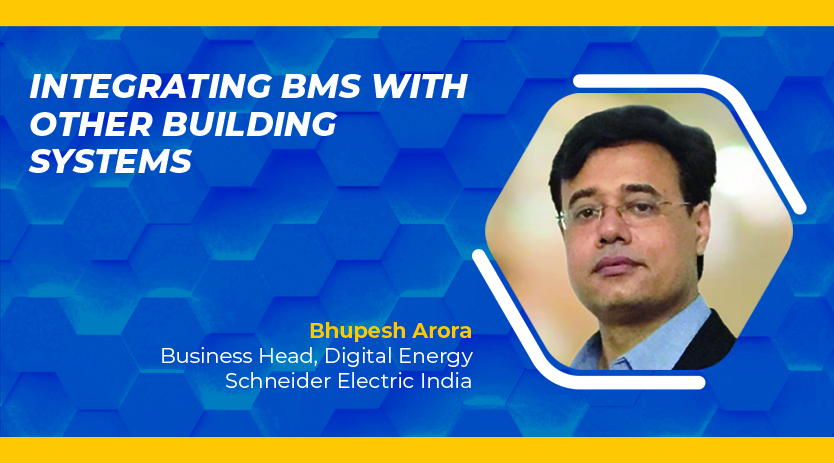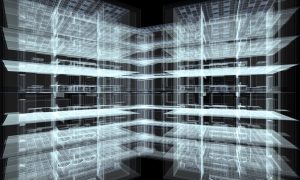According to Bhupesh Arora, Business Head, Digital Energy, Schneider Electric India, as Building Management Systems expand beyond HVAC control, integrating them with other building systems becomes essential. However, authentication mechanisms and data synthesis pose challenges while offering enhanced efficiency and sustainability opportunities.
How do environmentally sustainable solutions contribute to the HVAC industry?
HVAC control systems play a significant role in a building’s energy consumption, accounting for approximately 50 percent of final energy usage and around 40 percent of emissions attributed to HVAC. Organisations and businesses must prioritise implementing sustainable strategies to reduce heating and cooling energy consumption and minimise greenhouse gas emissions. By 2050, cooling systems will require three times more energy, emphasising the urgency for appropriate measures.
We assist the HVAC industry and machine builders by leveraging technologies like the Internet of Things (IoT), automated control systems, and remote-access controls. We aim to make HVAC equipment and businesses smarter, more efficient, and more environmentally sustainable. Our solutions cover a wide range of air-handling units, air-cooled and water-cooled chillers, offering both simple and compact options and more advanced building management systems. These solutions streamline system design by utilising application function blocks, enabling fast and effortless implementation.
What are the challenges faced by using BMS for monitoring and maintenance of HVAC?
As the scope of Building Management Systems (BMS) expands beyond HVAC control, it becomes necessary for them to integrate with other building systems like lighting. This integration requires the BMS to consume and push data to these systems and query data from them. Additionally, the BMS may need to connect with analytics services that communicate with a proprietary cloud. Integrating these systems is further complicated by the need for authentication mechanisms, which can limit and increase complexity.
The BMS generates significant data related to equipment, alarms, and warnings. However, the challenge lies in effectively synthesising this data to extract actionable insights. Improper configuration of the BMS can also lead to overwhelming amounts of data, resulting in increased maintenance requests. Consequently, addressing these issues may require more frequent site visits or ‘truck rolls’.”
How can HVAC contractors utilise BIM software to enhance efficiency for HVAC projects?
BIM Software is gaining popularity, enabling HVAC contractors and specifiers to gain in-depth insights into designs, layouts, materials, dimensions, and performance indicators. This technology allows contractors to develop construction plans and gather feedback from multiple stakeholders. It also facilitates the strategic placement of fire hydrants and sensors for temperature and humidity measurement, optimising efficiency before construction begins.
Another aspect of digitalisation is the utilisation of building information modelling (BIM) tools, which save design firms time and aid in specifying more energy-efficient buildings with environmentally friendly materials. Construction contractors also benefit from these systems as they help minimise rework, save time, and adhere to project schedules. This waste reduction contributes to a decrease in carbon emissions.
The application of 5D BIM modelling introduces time and cost savings elements compared to traditional 3D BIM. It optimises planning, estimation, scheduling, and procurement alignment and facilitates the digital transformation of facility management. The combination of digitalisation and electrification shapes the future of buildings, creating sustainable, highly efficient, and resilient assets designed with occupant well-being in mind.
What upgrades are necessary to transform modern HVAC systems for smart buildings?
The rise of smart buildings necessitates the adoption of technology within constructed environments. These intelligent applications continuously collect sensor data to monitor the well-being of each area within the indoor environment. Next-generation building management systems (BMS) offer enhanced connectivity, interoperability, and intelligence to meet the demands of digitalisation and create future-ready buildings. They enable integrating of various systems and devices into a centralised control centre for efficient building operations.
In the realm of HVAC, modern systems should leverage IoT connectivity to provide access to valuable building data. This allows for visibility into energy consumption patterns, including information on how, where, and when energy is utilised. Advanced cloud-based analytics, incorporating technologies like artificial intelligence (AI) and machine learning, play a crucial role in converting this data into actionable insights that can be accessed through any device.
What design changes are required by facility managers to reduce pathogens spread and manage better airflows for occupants’ health and safety?
The emergence of Green Building has introduced a focus on HVAC design for improved energy efficiency. Also, it has introduced new technologies and strategies to enhance interior conditions, ensuring occupant health and productivity.
At Schneider Electric, we provide our clients with forward-thinking solutions to help them develop strategies, achieve efficiency in their facilities, and maintain long-term results through lasting partnerships.
We offer Adaptable Architecture, allowing customers to choose between segregated or integrated architectures based on their specific site requirements. Compared to integrated architecture, our flexible architecture optimises operational expenditure (OpEx) costs by providing easy access to the Building Management System (BMS) segment. This helps our customers mitigate risks and reduce costs in a strict and evolving regulatory landscape. Clients who have implemented our smart solutions have reported up to 33% fewer complaints and up to a 2 percent increase in worker productivity.
Following the recent pandemic, ensuring the safety of employees, customers, and visitors has become a top priority for businesses. Additionally, there is a need to monitor compliance and mitigate workplace risks. Studies indicate that, on average, smart buildings are valued 7 percent higher than traditional buildings, with the market demand for smart buildings doubling every three years.
How do you evaluate a variable speed drive integrated HVAC system for variable speed control?
With the increasing complexity of electrical applications, variable frequency drives have emerged as a superior alternative to variable speed drives. Unlike traditional variable speed drives, variable frequency drives offer precise control over the motor’s direction and speed, resulting in enhanced performance. These drives allow for adjusting motor speed throughout its operational cycle, providing complete control over electric motor applications. By utilising variable speed drives, motors experience improved lifespan and energy efficiency due to the gentle ramping up of electrical motors.
Cookie Consent
We use cookies to personalize your experience. By continuing to visit this website you agree to our Terms & Conditions, Privacy Policy and Cookie Policy.















